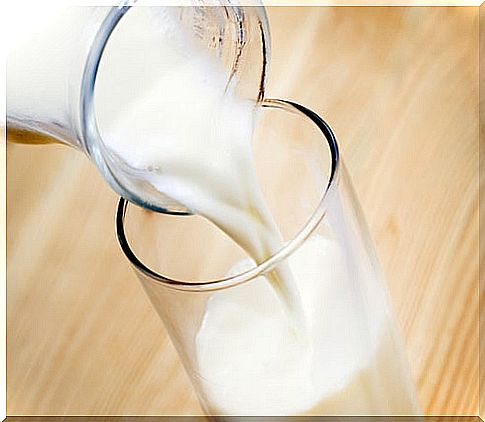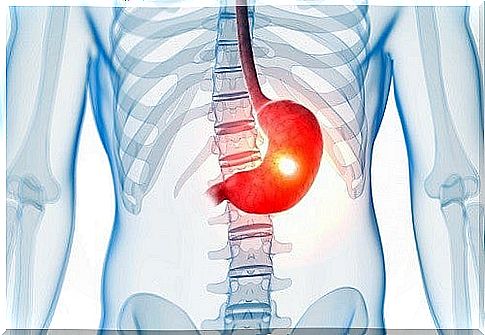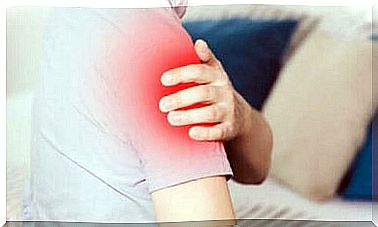How To Tell If We Have Lactose Intolerance
We can say that this is a “modern” term, or that dairy products increasingly contain elements that are harmful to our health. How do we know if we have lactose intolerance? Find out in the following article.
Lactose Intolerance: what is it?
Before you can determine whether or not you are lactose intolerant, you need to know a little about this imbalance or problem that affects thousands of people around the world.
It basically occurs when a person, right after consuming, especially milk (but it can also occur with its derivatives such as yogurt, cream, cheese, etc.) has digestive problems.
The malaise is caused by a deficit in the production of an enzyme called lactase (which is produced in the intestine), which has the ability to digest lactose.
Many people can be lactose intolerant. Some suffer from this problem at a certain stage of life and then “cure”, and others start with intolerance at a certain time and suffer from it for the rest of their lives.
This intolerance is not very common in babies, but it can happen in cases of premature babies, for just a few weeks.
Several researches have determined that the symptoms are more accentuated in adulthood. This can be related to the type of food adopted over the years, for example.

However, the researchers also indicated that even though this problem can happen in people around the world, there are some groups that are more likely. These are: Asian Americans, Native Americans, African Americans, Hispanics or Latinos, and people of Southern European ancestry.
If the intestine is damaged, it can produce less lactase. The reasons why this organ can be damaged are: infections, injuries, surgeries, celiac disease or Crohn’s disease.
Frequent symptoms of lactose intolerance
- Diarrhea
- Nausea.
- Gases.
- Cramping or abdominal pain (between hips and chest).
- Feeling of heavy and stomach bloating.
The problem can be diagnosed when the person suffers from one or more of these symptoms soon after consuming dairy or even with medical tests:
Breath. This test consists of drinking a liquid with lactose and then examining the breath to see if it was properly digested or not.
Feces. This test is performed mainly on babies and is used to determine the amount of lactose digested.

More questions (and answers) about lactose intolerance
To control one or more symptoms related to lactose intolerance it is recommended to make some dietary changes. It is possible that you can better tolerate dairy if you consume less of them and gradually increase the amount.
For example, start with a cup of milk every three days or yogurt a week. As you get used to it, increase the amount or reduce the space between intakes.
Always pay attention to how you feel after consuming this food. Try, for example, to drink skim milk, which is more “watery”, or even cheeses that are not very fermented (such as Roquefort).
Pay attention to this list of foods that contain lactose and that may be affecting your digestion:
- Ice creams.
- Cream.
- Butter.
- Cheese.
- Cream.
- Cream cheese.
- Milk.

Be careful as some processed foods may contain small or medium amounts of lactose as well. For example:
- Waffles or pancakes.
- Mix for making cakes and cookies.
- Box cereals.
- Breads and other baked goods.
- Margarine.
- Instant soups.
- Seasoning for salads.
- Whipped creams.
- Cream for coffee.
- Powdered milk.
What about calcium?
There are voices in favor and others against regarding the benefits of dairy and calcium that we need to stay healthy and strong. Some indicate that milk is the best source of calcium there is and others claim that there are foods with much higher levels of this nutrient.
If you are “officially” lactose intolerant, but are afraid of suffering from bone problems, for example, from a lack of calcium, you might want to start adding other types of foods to your daily diet:
- canned salmon
- Canned sardines
- Broccoli

- Spinach
- Chard
- Orange
- Brazil Nut
- lentils
- Almonds
- dry beans
- Soy milk (and derivatives).
It’s good to know that the body needs vitamin D to better absorb calcium. This is obtained by consuming eggs, liver and blue fish (salmon, sardines, tuna).
If, for example, you are a vegetarian, you can increase the production of this vitamin by taking 15 minutes of sun a day, always respecting convenient times (they say that the best sun is first in the morning: avoid exposure to UV rays between 11 am morning and at 3 pm).
Finally, in order not to have problems with calcium absorption, it is advisable to avoid consuming soft drinks (especially “cola” ones), tea, coffee and chocolate with meals or very close to them.
These foods prevent this nutrient, so essential for our body, to reach the organs properly.









